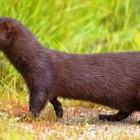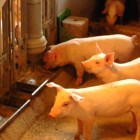Agribusiness
Possible punishment for revealing the names of pig farms
|
Two Danish journalists wrote about abscesses in children – accused of having named 12 infected farms.
Children with abscesses at the size of tennis balls in a Kindergarden in Løgstør, Denmark. Flickr. On 21 October 2010, journalists Nils Mulvad and Kjeld Hansen published an article on the website Aabenhedstinget.dk, a forum for debate on public law and journalism. They wrote of a silenced case about the difficulties in treating abscesses and ulcers in two children in the city of Løgstør in Jutland. The children were carrying resistant bacteria (MRSA).





